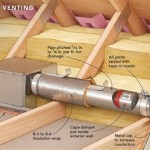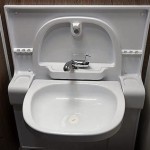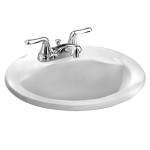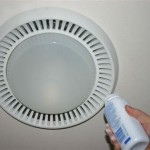Galvanized Metal Bathroom Sinks
Galvanized metal, essentially steel coated with a layer of zinc, offers a unique aesthetic for bathroom sinks. This material brings an industrial or farmhouse charm, contrasting sharply with more traditional porcelain or ceramic options. Understanding the properties, benefits, and drawbacks of galvanized metal helps consumers make informed decisions when choosing a bathroom sink.
Key Properties of Galvanized Metal
Durability is a hallmark of galvanized metal. The zinc coating protects the underlying steel from rust and corrosion, contributing to a long lifespan. This protective layer makes galvanized metal suitable for damp environments like bathrooms. The material is also relatively lightweight compared to other metal options, simplifying installation.
Aesthetic Appeal of Galvanized Metal Sinks
Galvanized metal provides a distinctive, rustic appearance. The characteristic silvery-grey finish adds a touch of vintage or industrial style to a bathroom. This material complements various design schemes, from modern farmhouse to minimalist industrial. The inherent texture of galvanized metal further enhances its visual appeal.
Benefits of Choosing a Galvanized Metal Sink
Cost-effectiveness is a significant advantage of galvanized metal sinks. They are often more affordable than comparable sinks made from other metals like copper or stainless steel. The durability of galvanized metal translates to lower long-term costs due to reduced replacement needs. Furthermore, these sinks are relatively easy to clean and maintain, adding to their overall practicality.
Drawbacks of Galvanized Metal Sinks
While durable, galvanized metal is not impervious to damage. The zinc coating can scratch or chip, exposing the underlying steel to potential rust. Harsh cleaning chemicals can also damage the finish. Moreover, galvanized metal can be noisy, amplifying the sound of running water. Finally, the material's heat conductivity means the sink can become quite cold to the touch, especially in colder climates.
Installation Considerations for Galvanized Metal Sinks
Installation of a galvanized metal sink is generally straightforward. However, due to the material's lightweight nature, it's crucial to ensure proper support to prevent flexing or movement. Using appropriate sealant around the sink's edges is essential to prevent water damage to surrounding surfaces. Consider the sink's weight when choosing mounting hardware and ensure wall or countertop structures can adequately support it.
Maintenance and Care for Galvanized Metal Sinks
Regular cleaning with mild soap and water is sufficient to maintain the appearance of a galvanized metal sink. Avoid abrasive cleaners or scouring pads, which can scratch the zinc coating. Promptly dry the sink after each use to prevent water spots and minimize the risk of rust formation. Periodically applying a protective wax or sealant can further enhance the sink's resistance to scratches and corrosion.
Design Options and Styles
Galvanized metal sinks are available in a variety of styles, from traditional farmhouse basins to sleek, modern designs. Some models feature decorative elements like hammered textures or rolled rims. Sizes also vary, accommodating different bathroom layouts and needs. Undermount, drop-in, and vessel sink configurations offer further design flexibility. The versatility of galvanized metal allows it to integrate seamlessly into diverse bathroom aesthetics.
Comparing Galvanized Metal to Other Sink Materials
When compared to other common sink materials, galvanized metal offers a unique balance of cost, durability, and aesthetic appeal. It's generally less expensive than copper or stainless steel but more resistant to rust than plain steel. While porcelain and ceramic sinks might offer a wider range of colors and finishes, they can be more susceptible to chipping and cracking. Choosing the right sink material depends on individual priorities and design preferences.
Choosing the Right Galvanized Metal Sink
Selecting the appropriate galvanized metal sink involves considering several factors. Bathroom size and layout dictate the suitable sink dimensions. Design style influences the choice of sink shape and finish. Budgetary constraints play a role in determining the appropriate level of quality and features. Carefully evaluating these factors ensures the chosen sink meets both practical and aesthetic requirements.

Galvanized Metal Oval Rustic Sink Drain Amp Faucet Industrial Farm House

Galvanized Metal Fluted Oval Rustic Sink Amp Drain Industrial Farm House

Steel Bucket Bathroom Sinks Atticmag

Galvanized Tub Sink Design Ideas

Galvanized Metal Bathroom Mirror Design Ideas

Vessel Sink Antiqued Vine Relief Heavy Duty Galvanized Tub

Diy Galvanized Bucket As Bathroom Sink Remodelista

Making A Galvanized Tub Into Sink Hometalk

Diy Galvanized Tub Sink The Prairie Homestead

Galvanized Bucket Rustic Sink Vessel Garden Bathroom Kitchen Size X
Related Posts







